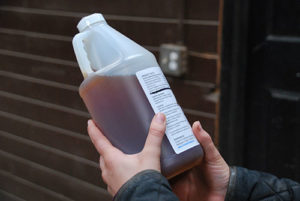Three Forms of Pigeon Fever in Horses
- Topics: Article
Infection caused by Corynebacterium pseudotuberculosis (commonly known as pigeon fever or dryland distemper) assumes three forms: external abscesses, internal infection, and ulcerative lymphangitis (limb infection). The most common clinical form of the disease, characterized by external abscesses in the pectoral or ventral abdomen, is often called "pigeon fever," due to the swelling of the horse's pectoral region resembling a pigeon's breast. Veterinarians also call it "dryland distemper," reflecting the prevalence in arid regions of the western United States.
There appears to be no breed or sex predilection for the development of any of these forms. Portals of entry for this soil-dwelling organism are thought to be abrasions or other skin wounds, or mucous membranes. Studies have shown that insects such as the horn fly, housefly, and stable fly can act as mechanical vectors for the transmission of this disease to horses. The disease could also be transmitted through horse-to-horse contact or from infected to susceptible horses via insects, other vectors, or contaminated soil.
History
The first deep intramuscular abscesses caused by C. pseudotuberculosis were reported in California in 1915, and the disease has since been considered one of the most frequently diagnosed equine infectious diseases in the western United States. Evidence exists that infection is increasing in incidence, possibly associated with climate change
Create a free account with TheHorse.com to view this content.
TheHorse.com is home to thousands of free articles about horse health care. In order to access some of our exclusive free content, you must be signed into TheHorse.com.
Start your free account today!
Already have an account?
and continue reading.
Related Articles
Stay on top of the most recent Horse Health news with

















